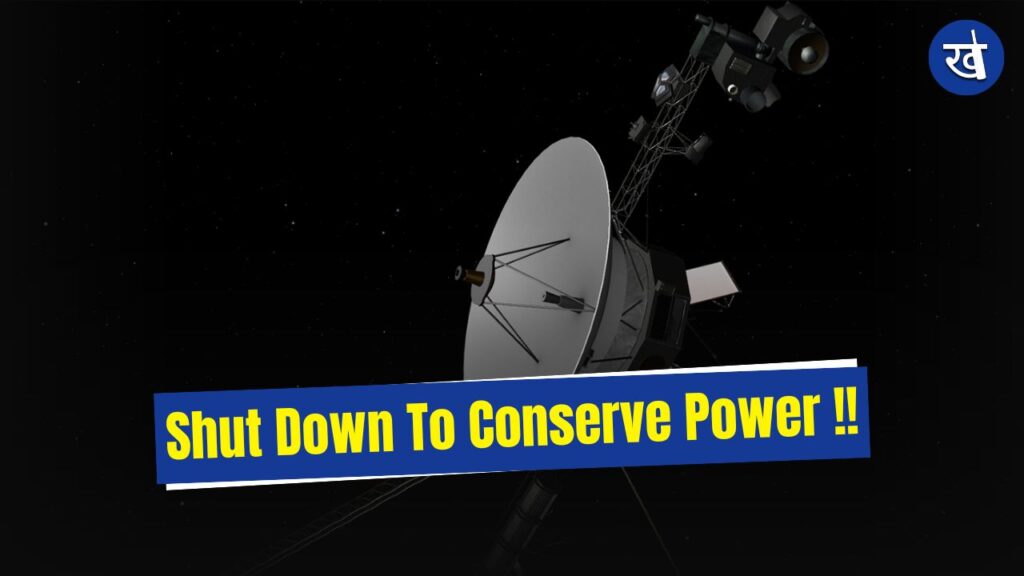
Table of Contents
As it ventures further into the depths of interstellar space, NASA’s Voyager 2 has recently deactivated its plasma science instrument. This step, taken to conserve the probe’s limited power supply, highlights the ongoing challenges of maintaining a 47-year-old mission far beyond its initial scope.
Why Was the Plasma Science Instrument Deactivated?
The decision, made on September 26, 2024, marks another step in NASA’s strategy to extend Voyager 2’s operational life. The spacecraft, along with its twin Voyager 1, relies on decaying plutonium-238 for power. Each year, this radioactive power source generates approximately 4 watts less energy. To manage these diminishing resources, NASA has systematically turned off non-essential systems and some scientific instruments. As a result, six of Voyager 2’s original ten instruments have now been deactivated, with the plasma science instrument being the latest.
This instrument, active since Voyager 2’s launch in 1977, played a crucial role in confirming the probe’s passage into interstellar space in November 2018. It did so by detecting a drop in solar particles that marked Voyager 2’s exit from the heliosphere. The plasma science instrument was designed with four “cups” to measure plasma (ionized gas) in space.
While three cups were oriented towards the Sun and primarily measured solar wind, these stopped collecting data upon entering interstellar space. The remaining cup, which operated intermittently during Voyager 2’s periodic 360-degree rotations, has provided insights into the behavior of plasma beyond the solar bubble.
Also Read – The Cuban Missile Crisis: When World War III Almost Happened
How Does Voyager 2 Conserve Energy in Deep Space?
The gradual shutdown of Voyager 2’s instruments is part of NASA’s broader effort to extend its mission as long as possible. In addition to powering down specific instruments, NASA has implemented various energy-saving measures. These include turning off heaters and adjusting voltage monitoring systems. Such strategies are crucial because the unique data provided by the Voyager probes is irreplaceable; no other spacecraft has operated in interstellar space, making these observations invaluable for understanding this unexplored region.
NASA’s Jet Propulsion Laboratory confirmed that the shutdown of the plasma science instrument was executed without complications. The probe remains fully functional, with three science instruments still collecting data. Mission engineers continue to monitor Voyager 2’s power levels, ready to make further adjustments as necessary. With these careful steps, NASA aims to keep the spacecraft operational into the 2030s, albeit with fewer active instruments.
What’s Next for Voyager 2?
Even as Voyager 2 moves deeper into interstellar space—now over 12.8 billion miles from Earth—it continues to yield scientific insights. Though the plasma science instrument is now deactivated, the remaining instruments are expected to gather data on the interstellar environment for years to come. Mission engineers at NASA will keep evaluating the spacecraft’s health and energy reserves, making tough decisions on what to deactivate next to extend its lifespan as long as possible.
The data collected by the Voyager probes not only expands our understanding of the cosmos but also underscores the ingenuity and resilience of human exploration. While Voyager 2’s capabilities are gradually reduced, its mission remains a testament to human curiosity. Each piece of data it sends back from interstellar space contributes to a deeper understanding of the universe and our place within it.
Also Read – 5 Most Powerful Earthquakes in History and Their Impact on Society
Well, Voyager 2’s recent instrument shutdown is a reminder of the challenges and rewards of deep-space exploration. As NASA manages these aging probes with limited resources, the Voyager mission continues to inspire, demonstrating the remarkable durability and scientific value of this pioneering exploration of the final frontier.